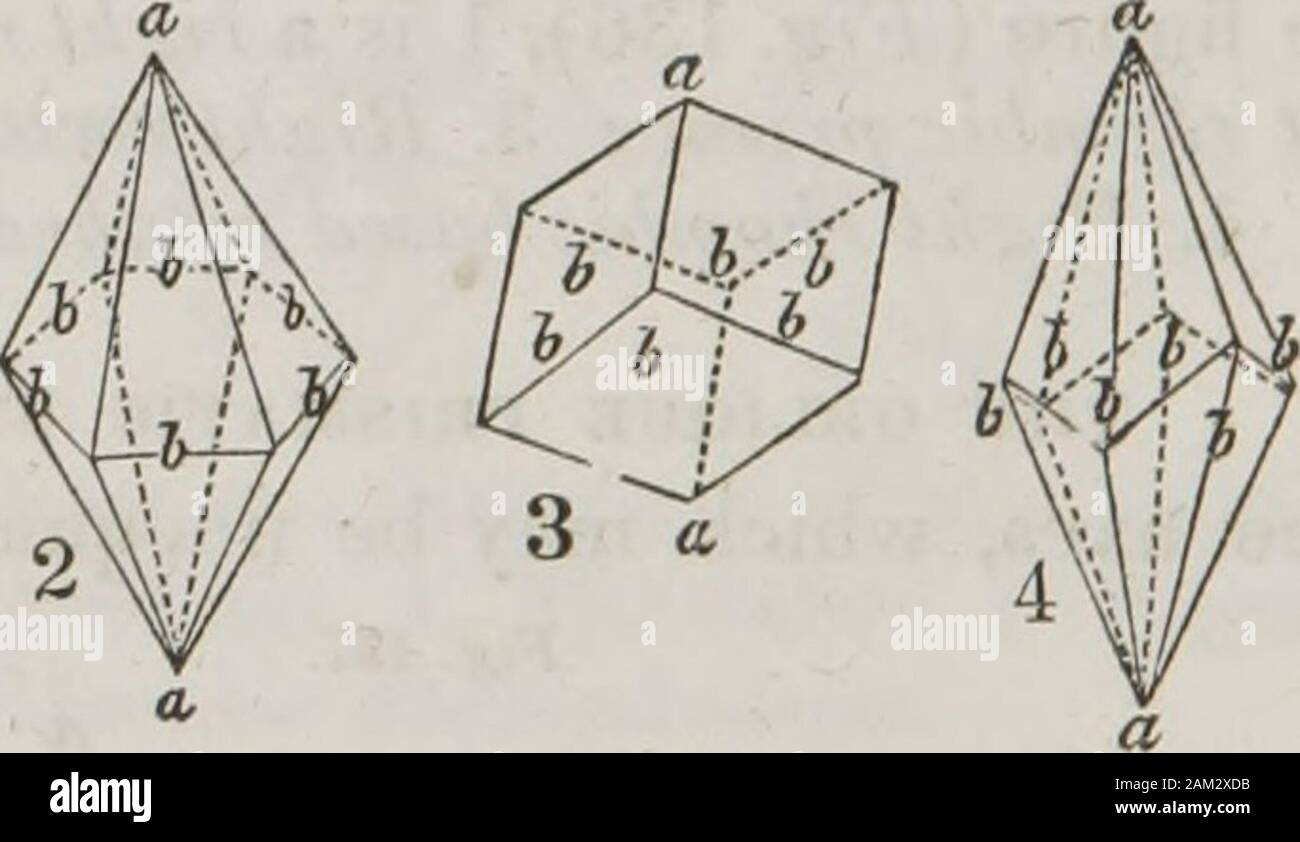A text-book on chemistry : for the use of schools and colleges . In the figure (Fig. 138), 1 and 2 are doubly obliqueprisms ; and 3 and 4 doubly oblique octahedrons. THE RHOMBOHEDRAL SYSTEM has four axes, three of which are equal in the sameplane, and inclined at angles of 60° ; the fourth, which isthe principal axis, is perpendicular to all. Fig. 139.. In the figure (Fig. 139), 1 is the regular six-sided prism ;2, the dodecahedron ; 3. Rhombohedron ; 4. another dode-cahedron. It often happens, owing to a change in the deposit ofnew matter on a crystal while forming, that other figuresthan the

Image details
Contributor:
The Reading Room / Alamy Stock PhotoImage ID:
2AM2XDBFile size:
7.2 MB (155 KB Compressed download)Releases:
Model - no | Property - noDo I need a release?Dimensions:
2078 x 1203 px | 35.2 x 20.4 cm | 13.9 x 8 inches | 150dpiMore information:
This image is a public domain image, which means either that copyright has expired in the image or the copyright holder has waived their copyright. Alamy charges you a fee for access to the high resolution copy of the image.
This image could have imperfections as it’s either historical or reportage.
A text-book on chemistry : for the use of schools and colleges . In the figure (Fig. 138), 1 and 2 are doubly obliqueprisms ; and 3 and 4 doubly oblique octahedrons. THE RHOMBOHEDRAL SYSTEM has four axes, three of which are equal in the sameplane, and inclined at angles of 60° ; the fourth, which isthe principal axis, is perpendicular to all. Fig. 139.. In the figure (Fig. 139), 1 is the regular six-sided prism ;2, the dodecahedron ; 3. Rhombohedron ; 4. another dode-cahedron. It often happens, owing to a change in the deposit ofnew matter on a crystal while forming, that other figuresthan the proper one are produced ; thus, the cube maypass into the octahedron, as shown in Fig. 140. How many axes arc in the rhornbohedral system, and what is their re-lation ? In what manner may crystals of one fomi pass into those ofanother, as the cube into the octahedron ? GONIOMETERS.Fig. 140. 159